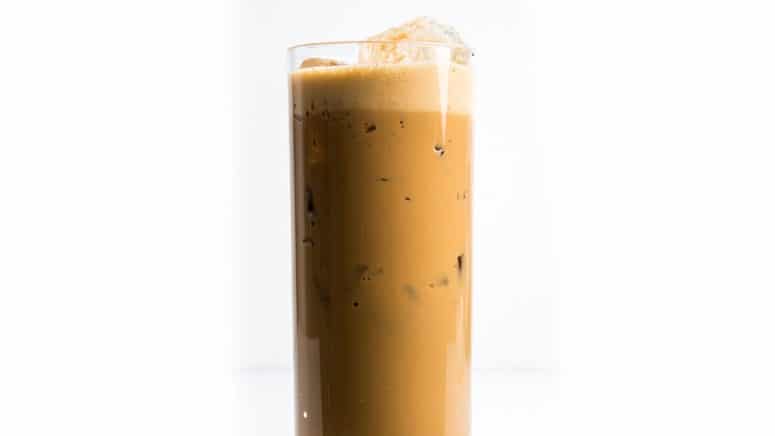When I was a kid there was one kind of chocolate in the baking aisle, and it was Nestlé chocolate chips. But then, like coffee, chocolate got big. Now the average grocery store has what feels like a dozen different types of chocolate—and not just chips but bars, disks, and wafers, each labeled with different percentages. So what kind of chocolate should you buy for eating, and what kind for for baking? Allow me to explain.
Chocolate is a shelf stable ingredient—we all probably have part of a bar or a half-empty bag of chips stashed in a cabinet somewhere—so it’s easy to forget that it’s very much a plant-based product. Understanding how it goes from the seeds of the cacao tree to the chips inside your cookies is important in differentiating all the main chocolate types.
Super Easy Palmier Cookies
Here’s a quick and dirty explanation: Cacao beans are fermented, dried, and roasted (this is for flavor development). Then the cacao nibs (the meat inside the large pod-like beans) are extracted and ground. This mixture is liquefied to make something called chocolate liquor (non-alcoholic, not to be confused with chocolate-flavored liqueur). That liquor is a mixture of cocoa solids and cocoa butter: chocolate in its pure form.
This is where we start to talk about percentages. The number you see on labels is, essentially, the proportion of that product made from pure chocolate liquor and any added cocoa butter. Basically, it’s what’s in the chocolate that isn’t sugar, dairy, vanilla, emulsifiers, or other flavorings. As a general rule, the higher the percentage, the more intense the chocolate flavor. The FDA sets minimum percentages for all the main chocolate types: milk, white, semisweet, bittersweet, and unsweetened. Here’s a breakdown of the types you’re most likely to see in the grocery store.
Peden + Munk
Creamy, dreamy Milk Chocolate Sauce over some crepes? Yes, please.
Milk Chocolate
Milk chocolate, as the name implies, contains at least 12% milk and must contain a minimum of 10% chocolate liquor (which is, to recap, pure cocoa butter and cocoa solids), though higher quality milk chocolates often contain as much as 30-40% cocoa. The rest is comprised of sugar and sometimes vanilla or emulsifiers. Milk chocolate is softer in texture and melts more easily than darker chocolates because of the added dairy, and it’s generally sweeter and less bitter. Because it melts quickly, it’s great as an eating chocolate. It also works in baking, but its sweetness it can sometimes make an already-sweet dessert a little too saccharine. When I make chocolate chip cookies, I like to do a mix of intense dark chocolate and smooth milk chocolate to satisfy all tastes.
Peden & Munk
Coconut-Lime Snowballs, for the white chocolate lovers out there.
White Chocolate
You hear chocolate purists say all the time: “White chocolate isn’t chocolate.” Which is sort of true, because it doesn’t contain any of the cocoa solids. It’s effectively pure cocoa butter and sugar (according to FDA standards, at least 20% cocoa butter and 14% milk, cream, or milk solids). Often there’s added vanilla. This makes it very sweet and creamy but also devoid of all the fruity and bitter complexity of regular chocolate. That said, there is a time and a place for using white chocolate, like in our recipe for Lime-Coconut Snowballs.
Tuukka Koski
Dark Chocolate Waffles, anyone?
Dark Chocolate
Dark chocolate is often differentiated into two categories: bittersweet and semisweet. A chocolate that is at least 35% chocolate liquor may be called either semisweet or bittersweet, and labeling is left up to the manufacturer. While sometimes semisweet chocolate has more added sugar than bittersweet, there isn’t a technical difference (which is why here at BA our recipes will call for either). Very dark chocolate can be as high as 80%, but that much cacao mass can make the chocolate very bitter and brittle, which many find unpleasant to eat. For baking and nibbling, I like to go with dark chocolates in the 65-70% range because they’re intense without being overpowering. Some dark chocolate is very fruity while others are mellow and smooth, but this is more a function of the sourcing and processing of the beans than the percentage.
Unsweetened Chocolate
Unsweetened is basically unadulterated chocolate liquor, so a mix of cocoa solids and cocoa butter without any added sugar. It’s super bitter and not good for eating on its own. It’s used almost exclusively in cooking and baking, particularly in cases where a recipe uses a lot of sugar and doesn’t benefit from the extra sugar of sweetened chocolate, like brownies for example.



